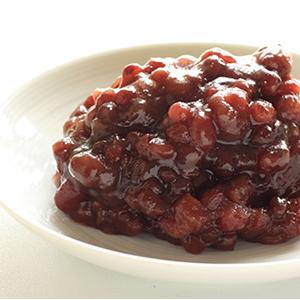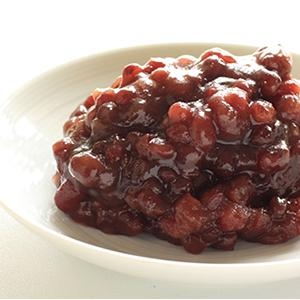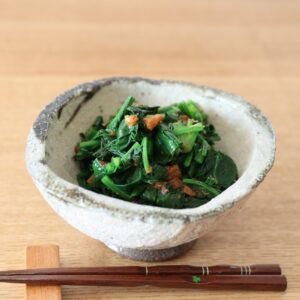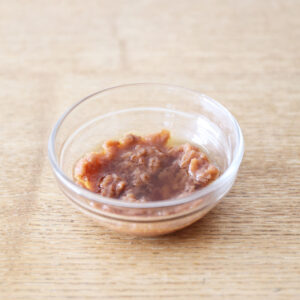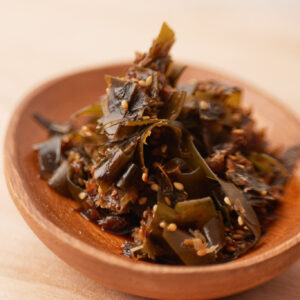Hello,
Welcome to Kawashima The Japan Store.
Anko (Red Bean Paste) a paste prepared by boiling adzuki bean (red bean), mashing and sometimes sweetening them with sugar. There are two most common types of anko: tsubuan and koshian.
Koshian is a smooth-textured red bean paste because the bean skins are already been removed. Because of its smooth texture, koshian usually used for making wagashi (Traditional Japanese Sweets). Meanwhile, tsubuan (chunky red bean paste) has a thicker texture while having the same taste as koshian.
Anko is a very well-known and widely-used paste in Japan. You can enjoy it as it is for use it for Japanese sweets filling, such as dorayaki, taiyaki, mochi, daifuku, etc.
In this article, we will explain an easy way to make Anko (Red Bean Paste) – Tsubuan. This recipe is gathered by Kawashima Japan Store under the advice of Japanese sweets manufacturer.
We would really appreciate it if you can use it as an example of the process of making an Anko.
 Content List
Content List
Ingredients
※ For 520g portion of finished amount※
What to prepare:
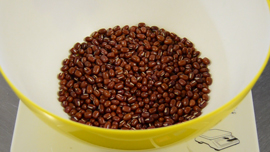 |
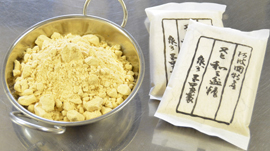 |
| Azuki Bean 200g | Wasanbon Sugar 200g |
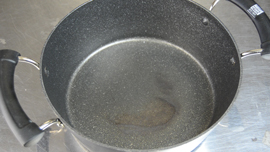 |
 |
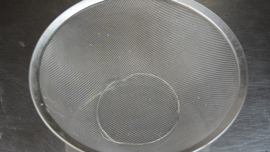 |
| Pot | Wooden Spoon | Draining Basket |
※ Wasanbon sugar is a fine quality sugar, characterized by its elegant sweetness.
You may also use sanontou (very light brown sugar), white sugar or granulated sugar.
More convenient if you have:
 |
 |
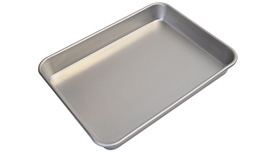 |
| Long chopstick | Bat | Cotton gloves |
Click here to see our Recommended Product for Handmade Anko
How to Make Tsubuan (Red Bean Paste)
1.Wash the Azuki Beans
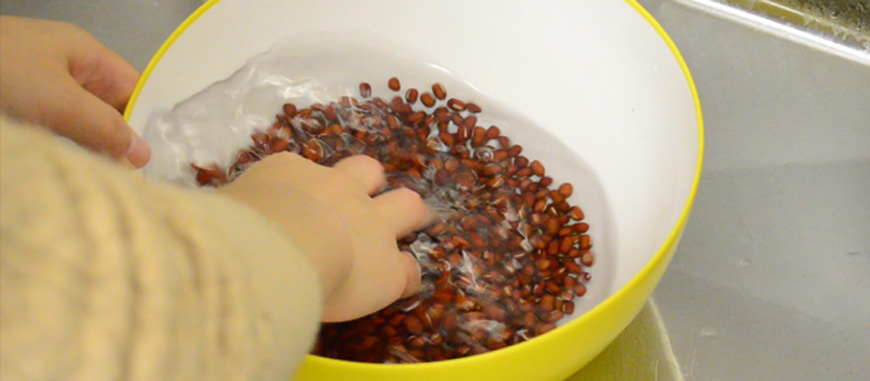
Wash gently the azuki beans with plenty of water.
2.Do the Astringent Removal
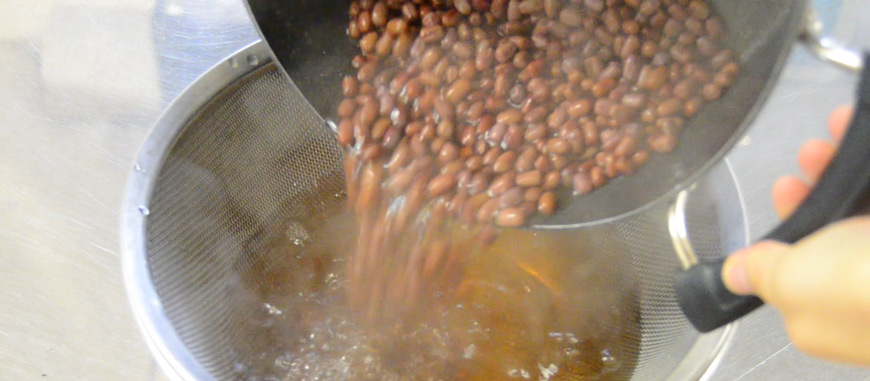
Azuki will swell about 2.4 times when absorbing water.
Use a large pot.
First, boil azuki bean with plenty of water.
After fully boiled, stop the fire, close the lid and leave it for about 20 minutes.
After you finished steaming, discard the broth.
This process is called astringent removal.
By doing astringent cutting, it will improve the taste and the beans became easier to boil.
Soak the soybean into water with vinegar
3.Boil the Azuki Beans
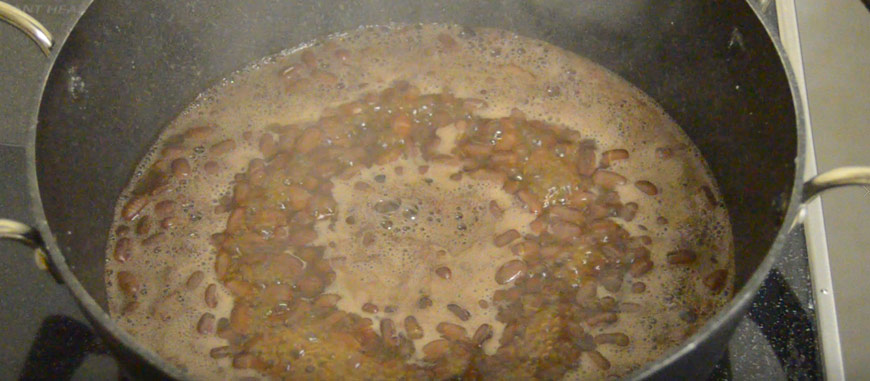
Put the Azuki beans in the pot again and add water.
Boils the Azuki beans with as much as water as possible.
Boil the Azuki beans for 1 hour with low heat.
It’s a bit tricky to keep the Azuki beans to not moving around while get boiled in hot water.
Please pay attention to the fire so that the beans will not be moving around and get crushed.
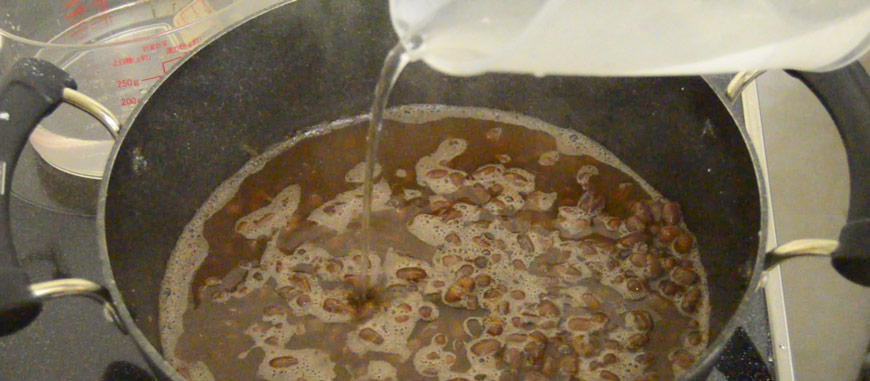
If the hot water decreases, add more water to keep maintaining the amount of water to boil the red beans. Moisture will also be reduced by absorption of beans, so when the beans come out above the surface of the water, we should add water frequently.
Using the lid makes beans difficult to moving around, but for those who are still new at this, we recommend you to boil the Azuki beans while observing the condition of the beans, without any lid.
Here, using bean lids makes beans difficult to dance, but for those who are new, we recommend boiling down while observing the condition of the beans, with no obvious lid. Please enjoy the process of boiling the beans, carefully. You can also smell the aroma of red beans as well.
We have to check the condition of the beans.
Try to crush it with your finger, if the beans can be crushed with light force, then it means the beans is in a good condition. Since the size of bean isn’t the same, there might be some uneven boiled beans. We have to check the boiling conditions of some beans.
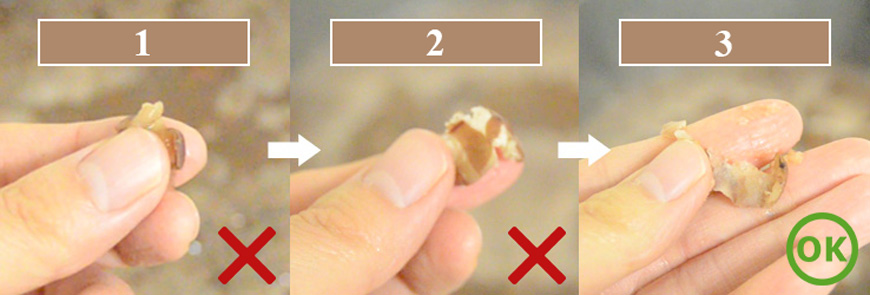
This is the reference picture to check the condition of the beans.
- 1. The beans is still hard to crush. Shimmer it for more minutes.
- 2. Please shimmer it for more minutes.
- 3. Boiling stage. This is the perfect condition of the beans.
■ If you use a pressure cooker
Put the red beans in a pressure cooker and put enough water to make it ready to be boiled.
Set the fire for approximately 8 minutes, then steam for about 10 minutes.
Open the lid, boil until the amount of water deceased and you can see the light bubbling of boiled water on the surface.
4.Steam the Azuki Beans
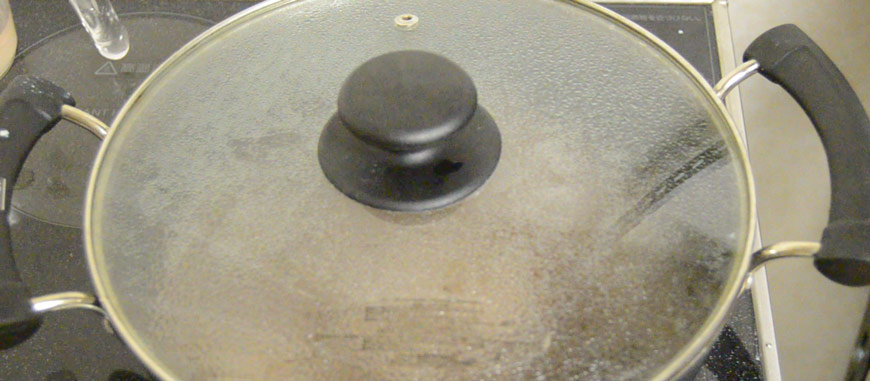
Once the azuki bean fully boiled, stop the fire and close the lid. Leave it be for 20 minutes and then steam the azuki beans.
Steaming the azuki beans could prevent uneven boiling. If you found some unboiled beans, please boil again with low heat.
If you let sugar infiltrate the remaining beans, it will become as hard as stone and could not return to its former state.
Because steaming is an important process, we have to do it firmly. When you finished steaming, discard the broth.
5.Melt Sugar in The Water
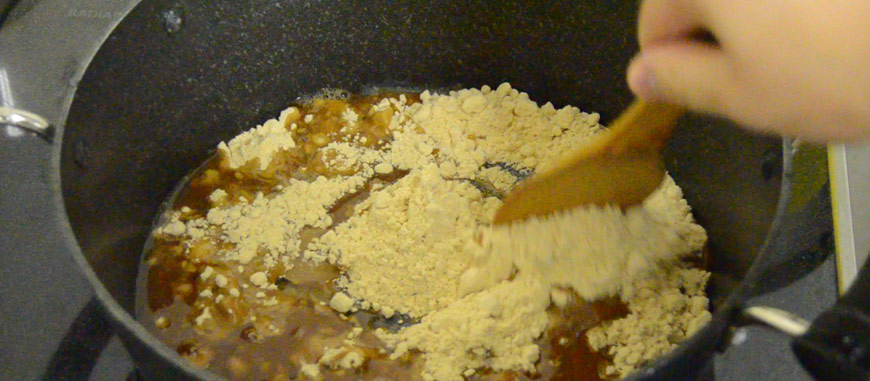
Pour 70ml of water in the pot and melt the sugar over low heat. It’s not necessary to completely melt the sugar.
6.Mix The Azuki Beans and Sugar(Red Bean Paste)
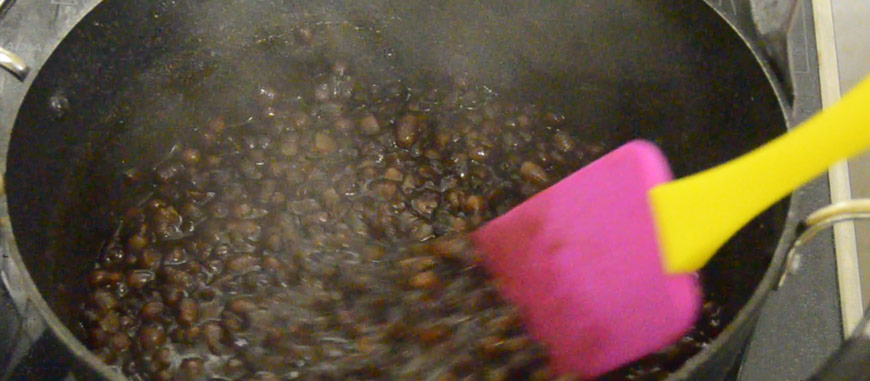
Put the azuki beans in a pot with melted sugar, cook with high heat.
Without crushing the beans, stir it carefully to prevent burns.
Keep the high heat even though it’s boiling. Mix quickly from the bottom of the pot.
To avoid getting burned in the middle of the process, please wear long sleeves and gloves.
The stickiness will increase gradually.
Since anko will get hard texture when it cooled down, to keep it a little softer rather than hard texture is just good.
If you like salt, add it immediately before finishing.
If you put a little grain of salt, the taste will get stronger.
7.Cool the Bean Paste
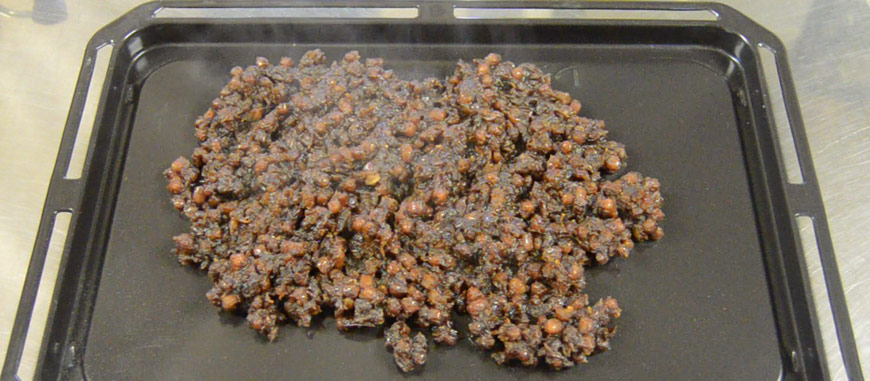
Once you have reached the desired texture, quickly transfer it to a separate container and let it cool.
If you left in the pot, the sugar will be transformed by heat, and the aftertaste will be bad.
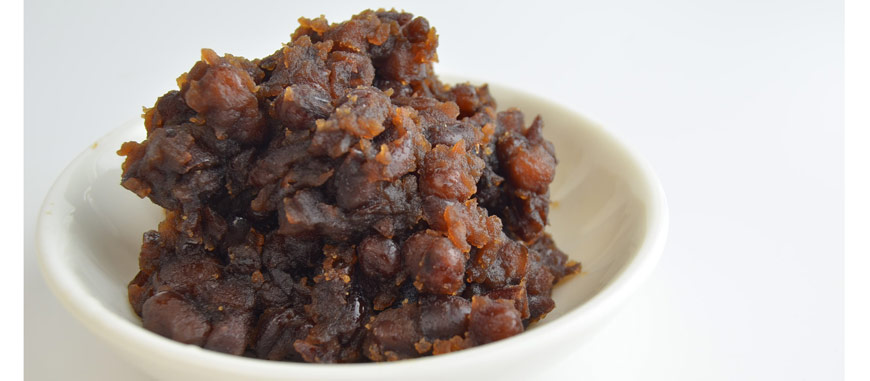
Delicious anko is ready to consume.
As you like, you can enjoy the freshly made anko with Daifuku and Osarako.
Preserving the Anko
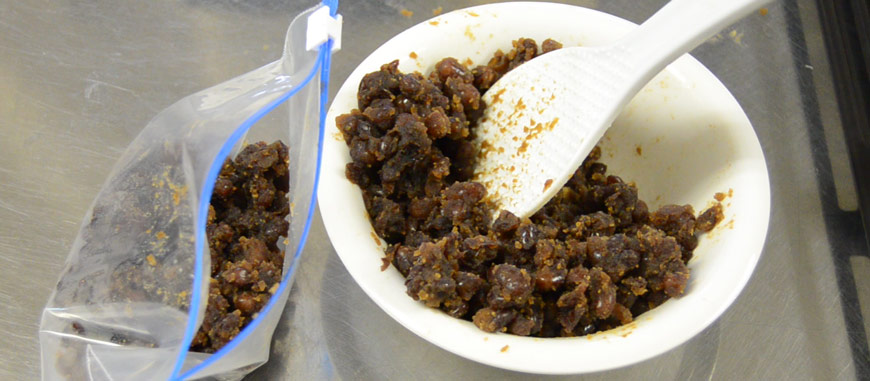
When the heat starting to vanish, divide it into small size and put it in refrigerator, or you can also keep it in the freezer.
It can be stored in the freezer for about 2 to 3 months. In case of you storing it in the refrigerator, please eat as soon as possible.
Click here to see our Recommended Product for Handmade Anko
Six Nutritional Benefits of Red Beans
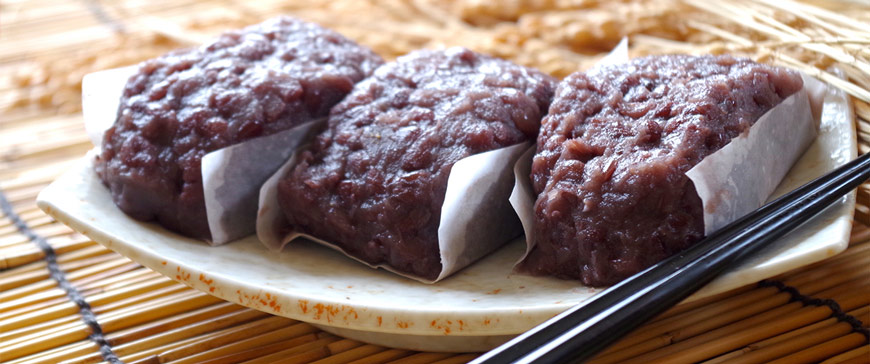
During a diet, you better not eat the sweets such as cakes, but the choice of sweets such as bean paste is suitable for diet. Anko contains plenty of benefits in beauty and health.
■Dietary fiber will be a good solution to constipation problem
Red beans are very rich in dietary fiber, and has ‘Insoluble dietary fiber’ which able to increases the bulk of the feces, and also has ‘Water soluble dietary fiber’ that suppresses the rise in blood glucose level. For those who wants to relieve their constipation problem, red bean paste will be the perfect solution.
■ Contains high quality protein
Although the quantity itself is small but Azuki beans contains high quality protein, it is quite an important element in making muscle, blood, organs etc. Azuki beans has a protein with low fat content, so it can be said that it is suitable for diet.
■ Accelerating regeneration with vitamin B group
Azuki beans contains vitamin B1 which turns sugar into energy. Not only that, there’s also Vitamin B2 and B6 which is good for skin.
■ Eliminate swelling with minerals
The minerals contained in azuki beans is able to reduce excess moisture. In addition, because one of the minerals “iron” is abundant, it is also effective to handle anemia for many women.
■ Suppress neutral fat with saponin
The saponin in azuki beans has a function to suppress cholesterol and neutral fat, and it also helps to prevent lifestyle diseases.
■ Red bean polyphenols
Although a polyphenol is famous for wine etc., azuki beans also have “catechin glucoside” and Polyphenols called “anthocyanins” are also included. Azuki beans can be used as an anti-aging food.
You can also expect a benefit of fat absorption by eating anko cake together with green tea, because it has catechin effect which is good for antioxidant and metabolism.
When you are in the middle of a diet and really want to eat sweet things, you can choose azuki beans as an alternative to reduce sugar as much as possible.
Click here to see our Recommended Product for Handmade Anko
Homemade Anko QnA
- Is it okay to not soak the azuki beans in water overnight first and just boil it instead?
- It’s okay to not soak it in the water.
We can start boiling right away. But because the azuki beans has a hard skin, it has a bad water absorption. Even so, the inside is so soft that the skin will become soft as well if we soak it. Also, if you keep it in water too long, it could lose its beautiful red colour.
- What is astringent removal?
- It is a way to make the aftertaste of azuki beans clearer. The methods that throw away the juice (bitterness or sourness) is called astringent removal. Azuki beans is part of astringent food, so doing the astringent removal is required. Since it is also contained an active ingredient such as polyphenol, we have to properly extract it. If you do astringent cut one time, you can taste the rustic azuki bean and also the wild taste. There are also people who do astringent removal many times. But since it is a bean product of a Kawashima Japan Store, it is enough to do it just once.
- How to soften the anko with hard grain?
- If you already putting it in sugar, it will not become softer anymore.
I am sorry to say this, but it is a failure. At the stage of boiled beans, if you make the bean paste together with the non-boiled beans remaining, it will become a hard grain anko.
Let’s do the boiling step carefully.
- What is the proportion of red beans and sugar?
- The basis is 1:1.
Usually people boil with the same amount of sugar as the red beans, but if you want to simmer boiled sweetness with less sugar, please try about 80%. If you only put too little amount of sugar, it will taste bad.
- Is it not good to stir the cooked beans?
- If the flow of fire is bad, it’s better to mix it.
There are several recipes of cooked beans, and some say that “it is better not to mix”. There’s also another recipe, but if you do boiled beans in a household pot, you will inevitably get an uneven boiling. Please mix gently and carefully, to the extent that the beans will not get destroyed, so that it can be cooked evenly.

